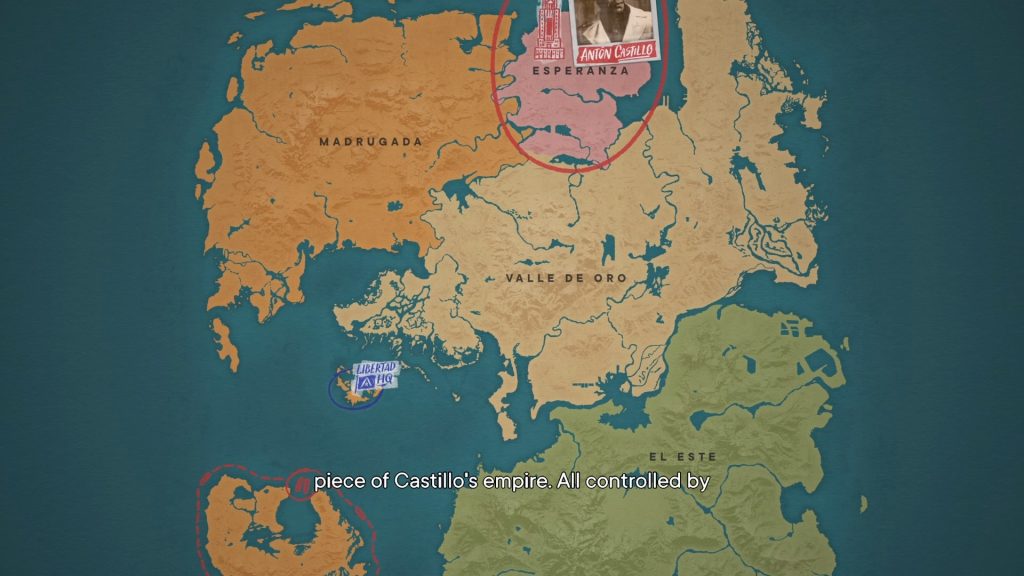Spoiler Warning: This review has endevoured to be as spoiler-free as possible and all images are taken within the first few hours of the game. All images were taken on a base PS4.
Far Cry 6 (FC6) goes back to its roots with players exploring the tropical island of Yara. Recent Ubisoft games have taught us to expect an enormous open world with a dizzying checklist of activities to do and FC6 follows suit.
Yara is huge, so much so that it truly feels like you are exploring a country. But this novelty only lasts for a moment before the dread kicks in and you are left wondering ‘where on Earth do I even begin?’
The usual activities are here but FC6 feels uncomfortably familiar to those who have played any entry in this series since Far Cry 3, back in 2012.
Some may enjoy the familiarity, but it is hard to deny that this formula is beginning to wear.
We play as Dani Rojas, a military dropout turned guerilla extraordinaire, capable of destroying armies armed with nothing but their guns and backpack. Unlike Far Cry 5, Dani is fully voiced and visible in cutscenes for the first time. Dani is a likeable protagonist, who links all of FC6’s supporting characters together in a way that feels semi realistic. Yet nearly every character, including Dani, suffers from the same problem – poor writing, development and lack of screen time.
Far Cry games live and die by their villains and no other character shows the games lacking narrative quality than Antón Castillo, played by Breaking Bad’s Giancarlo Esposito. Esposito brings his A game, but aside from his own personal charisma, he is not given the screen time to become something more. He is a character of unforgivable clichés. Dressed in a white suit, smoking cigars, pouring himself a whiskey to the sound of a record player? It’s trite at best.
Castillo is El Presidente of Yara and was elected on the promise of making Yarans rich via their cancer wonder drug, Viviro. But surprising no one, this drug is being harvested through labor camps filled with ‘outcasts’ who oppose the state. Medical experimentations, poisonous fumes and blatant war crimes all happen to opposers of ‘Paradise’.
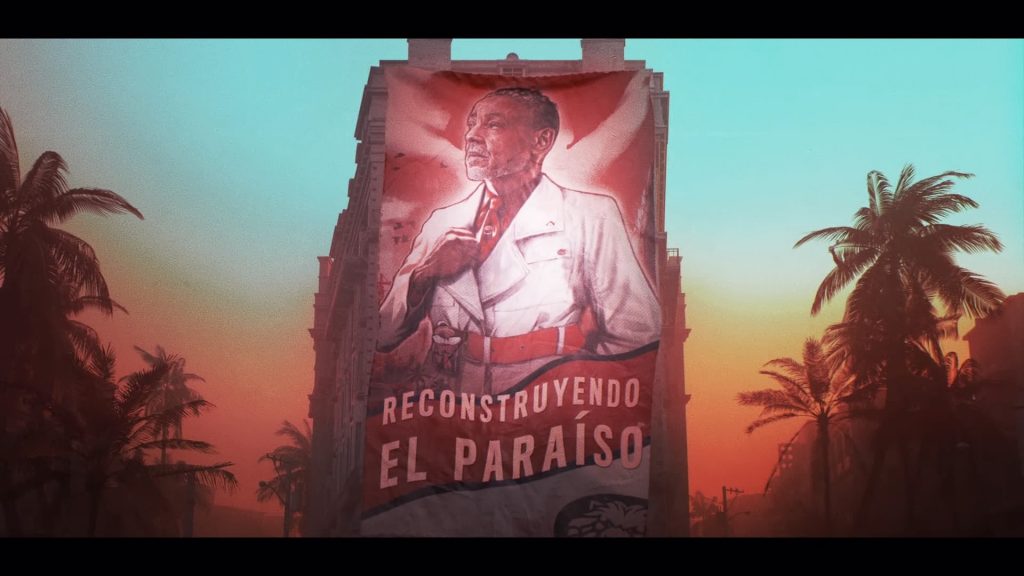
Antón Castillo had such potential, but unfortunately poor character development and little screen time ensures he does not rise to be the best of Far Cry’s villains
Despite the heavy topics, FC6 falls into the familiar pattern with Ubisoft not supporting these themes with appropriate tone and discussion. The main guerilla group opposing Castillo (and who Dani fights for), Libertad, seem to treat the revolution as a joke. It is only Clara Garcia, Libertad’s jefa who seems to possess any understanding of the reality of the situation. Castillo’s death will only be the beginning in a long and bloody future for Yara, as sharks linger in the water ready to gain any amount of power, control and wealth they can from a tired nation.
It is moments when the characters acknowledge the bleakness of their nation’s future that the game comes the closest to having something to say. But for every moment of sincerity there are ten where characters simply laugh and tell you to go and blow stuff up.
Ubisoft have espoused that their games are not political, and so we must question why they set their games in the settings that they do if they are not prepared to comment on them with any amount of depth.
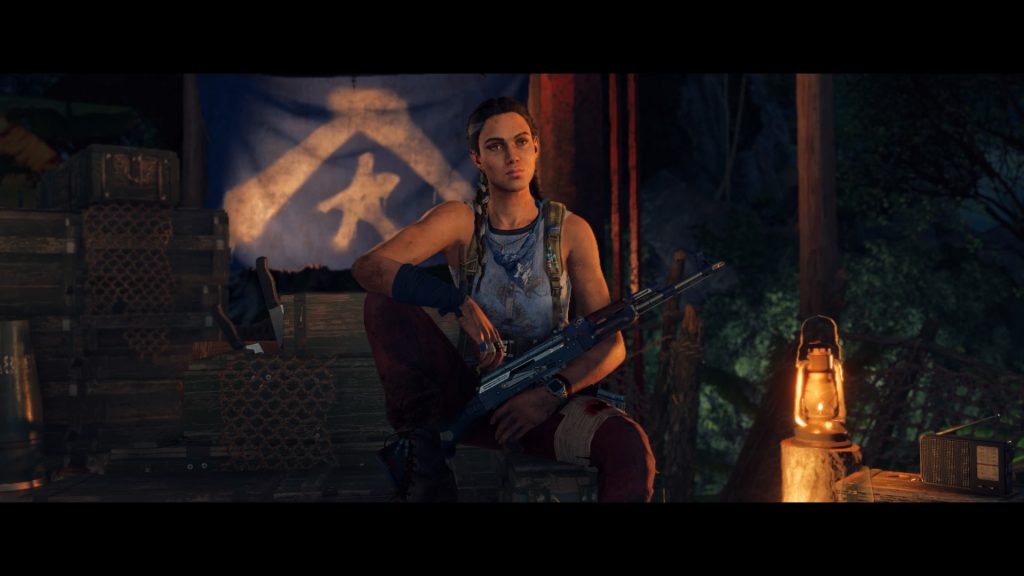
Clara Garcia, the leader of Libertad, is more fleshed out than most; but even she falls short of reaching her full potential. The voice of reason in the madness of a revolution, her motto is clear: When chaos rules, revolution is order.
Despite its narrative short-comings, FC6 innovates in small ways. For the first time, players can explore an urban setting in the city of Esperanza. The city is full of checkpoints, soldiers and an imposed curfew at night, meaning navigating the city is a challenge and requires more attention that one might anticipate.
Combat plays much the same as FC5 but with the new addition of Supremo backpacks, chaos is easier than ever to reign down on your enemies. Supremos act like a power up ability and can do anything from firing rockets capable of taking down tanks, to chucking poisonous gas at your enemies which turns foes into friends.
The game is at its best when you are thrown into chaos and told to have fun and it does this exceedingly well when nothing is getting in the way.
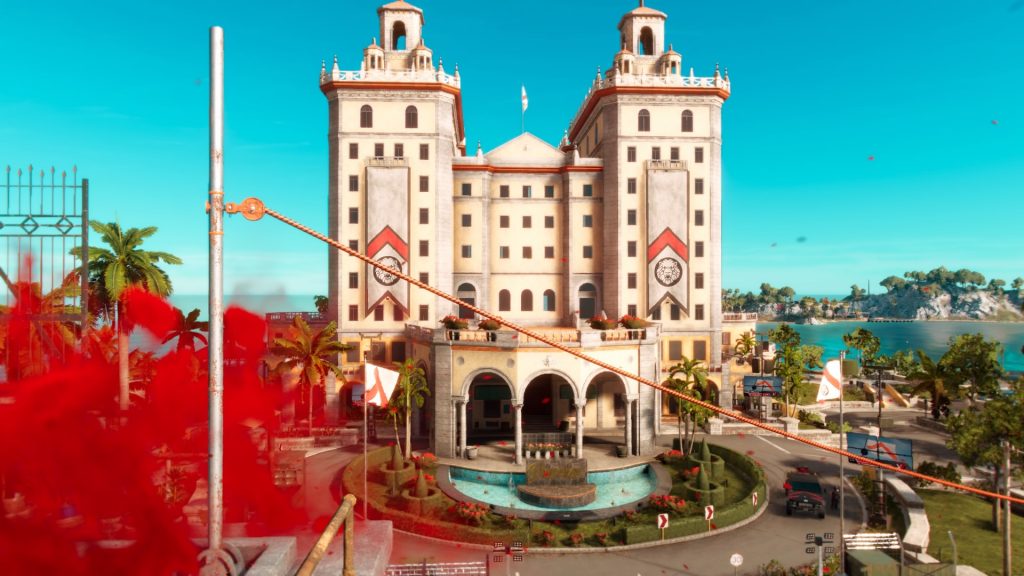
Esperanza is the first urban area Far Cry has produced and its streets offer danger and loot aplenty if you can manage to navigate its streets
No review of FC6 can be done without mentioning the turmoil at Ubisoft over the last two years. With toxic work environments, managerial shakeups and targeted harassment of female exployees, FC6 is a product of a studio facing its reckoning. The game makes token gestures of inclusivity, with female Dani being used heavily in the game’s marketing and one major side character being transgender. This is appreciated; however it is hard to read these as anything more than futile gestures to change the narrative around the studios malpractices.
Recent news out of Ubisoft does not paint a picture of change and so we can only hope that FC6 is the beginning of a new creative turn for the studio. However, I will not hold my breathe on that being true, especially when FC6 already has a fleshed out microtransaction store being flaunted in the menu page.
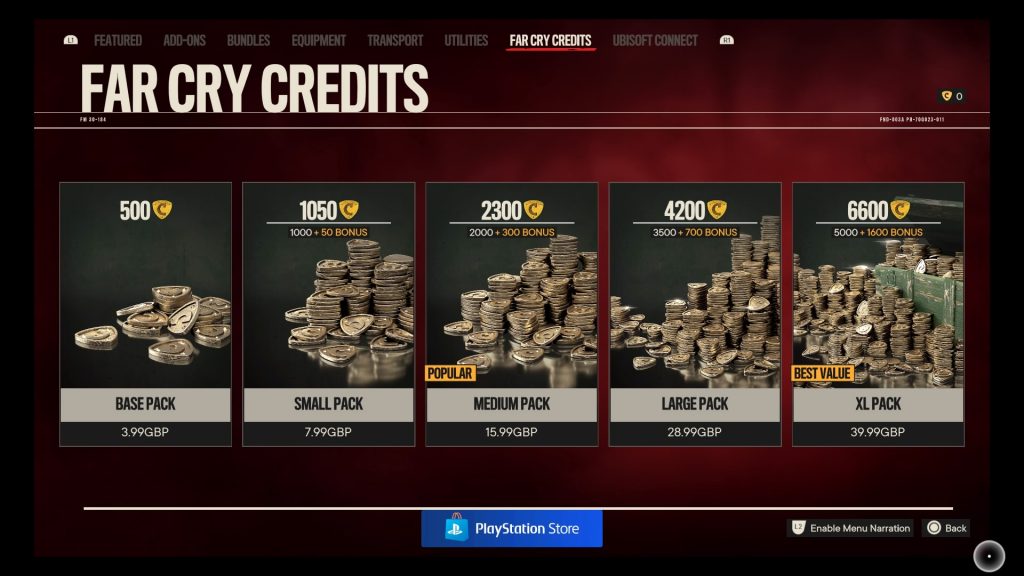
Ubisoft may have made token acknowledgements of change but old habits die hard as Far Cry 6 comes fully prepped with a microtransaction store
Overall, FC6 is an extremely familiar explosive sandbox with bombastic combat and entertaining characters, if not as compelling as Far Cry 5’s. However, its subject matters lack the weight that they deserve and paints fascism, guerilla warfare and developing nations as places of great fun. The game never really makes its point about what it thinks of nation building but is more than content to let players continue the familiar formula of taking over military bases and progressing through a map too large for its own good.
FC6 is at its best when it doesn’t want you to think, but for some, this will not satisfy the urge to see the franchise innovate more thoroughly.
